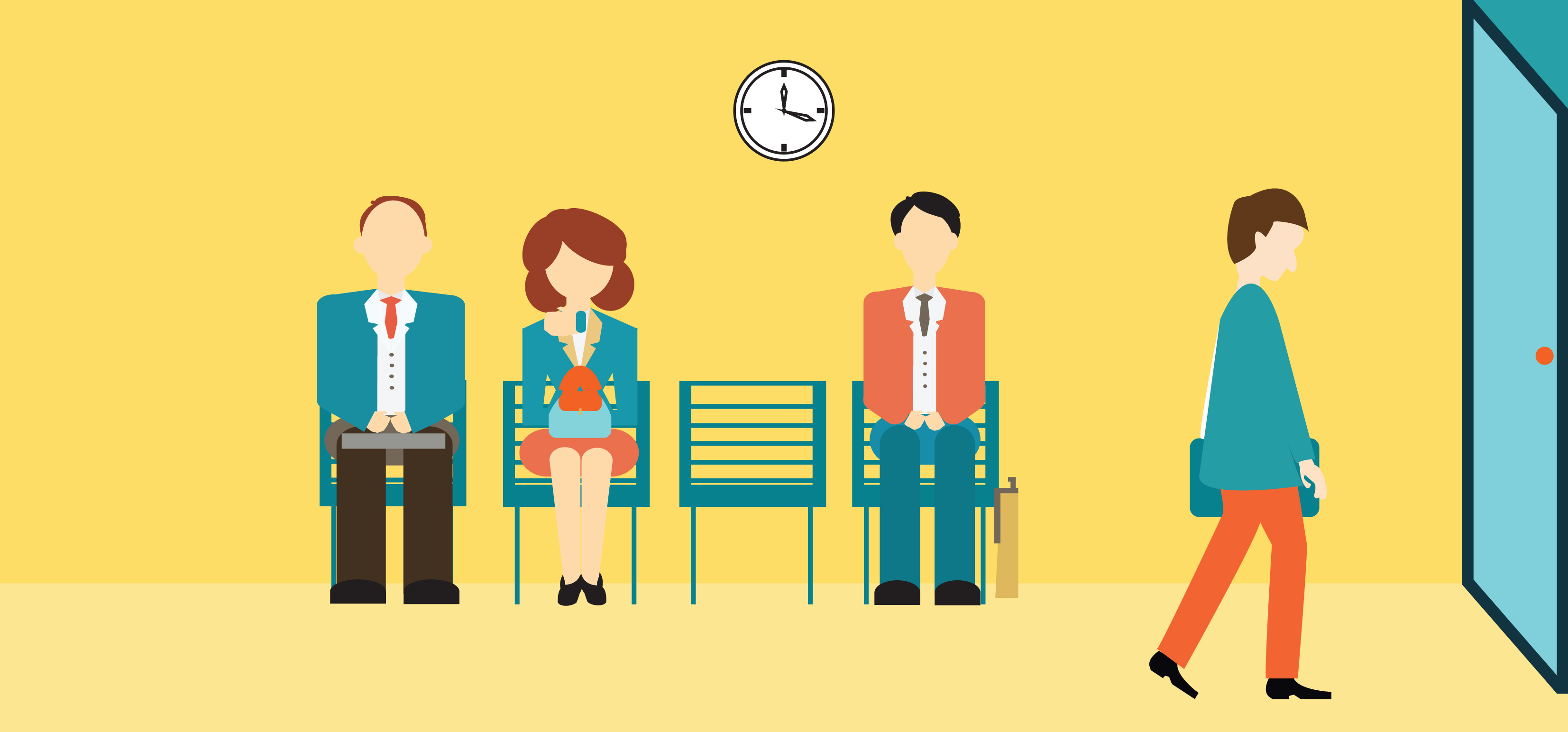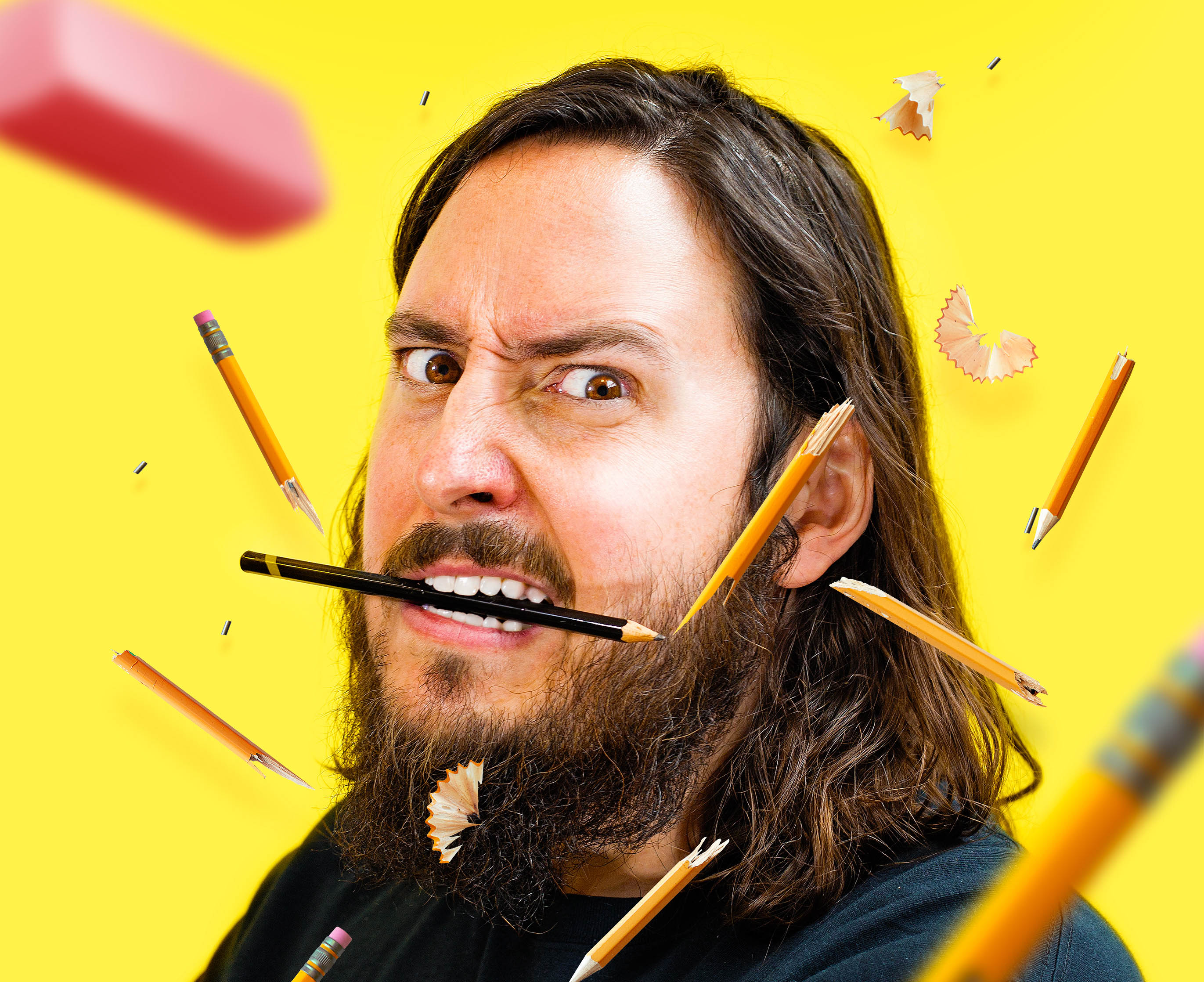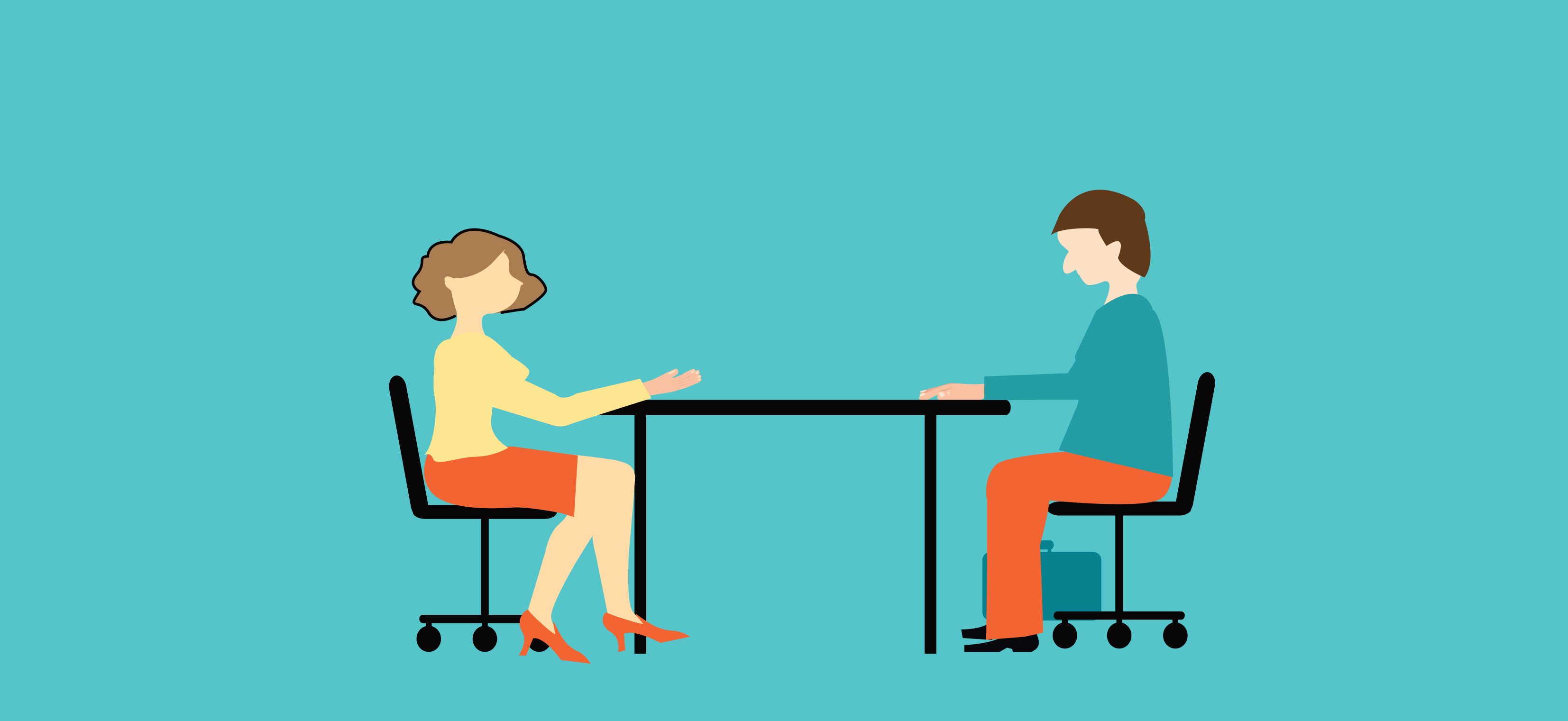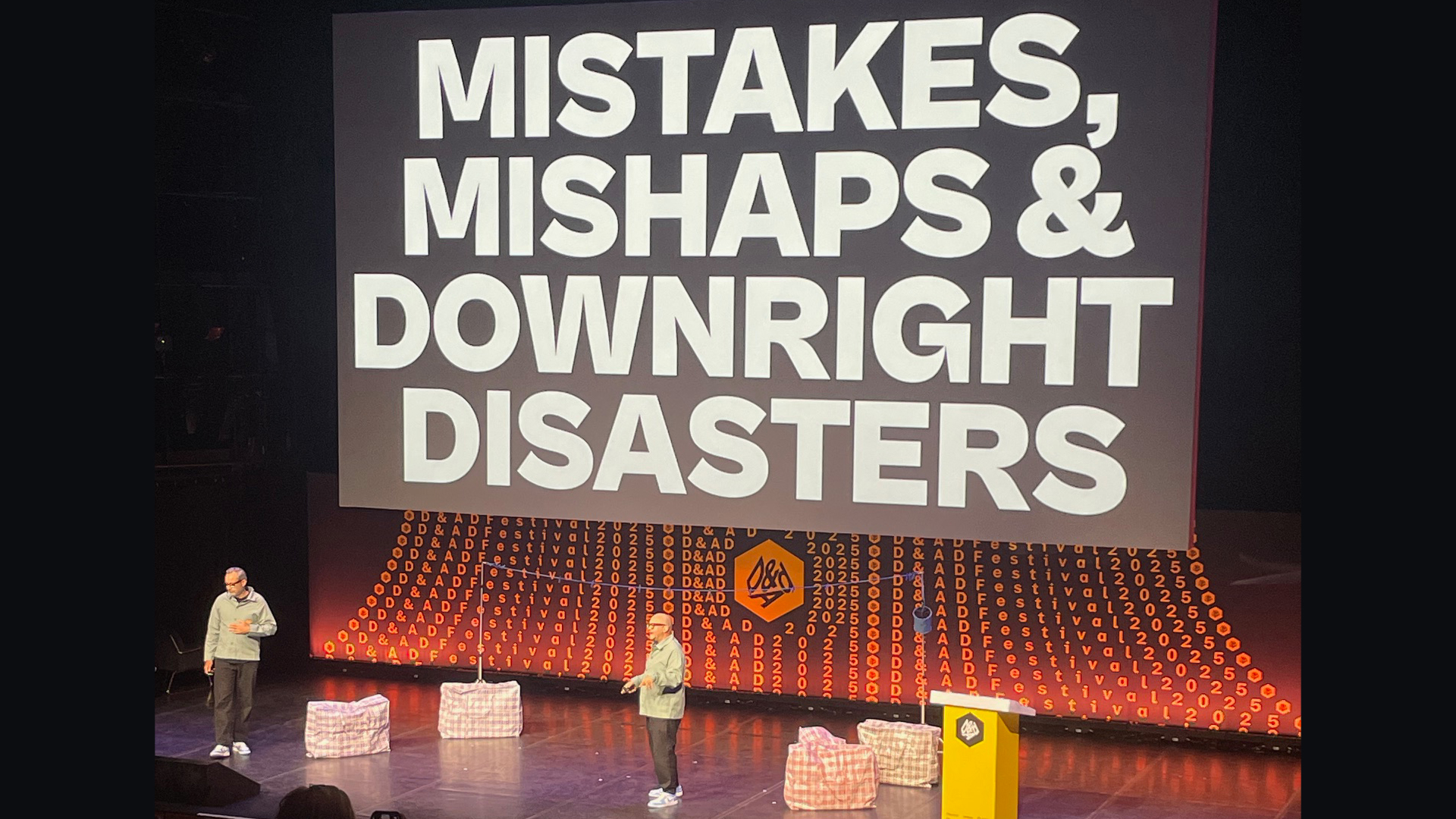How to interview for a design job
We guide you through the things you should and shouldn't do when interviewing - whichever side of the desk you're on.

Interviewing for a job is normally stressful and thrilling. You are being tested and you know it. As much as you prepare for it, the outcome can be unpredictable. You could be asked something unexpected, you don't know the person you are dealing with or what their current mood is. It's both a professional transaction and a personality test.
I have had terrible and great interviews in the past. The more people I've interviewed the better I have gotten at being interviewed myself. I want to share three personal stories from both sides of the table, as a candidate and as an interviewer. I have failed pretty hard in some of them but even then there are things to be learned and I hope you find them useful or at the very least entertaining.
For the sake of privacy and respect for others I won't mention names or provide any more context than necessary to illustrate the different situations.
Talking the talk
It was early in the morning and the streets of North London were empty. A few days back I had printed the map with the exact location of the studio I was going to be interviewing at but the area wasn't really that detailed and the address was a warehouse-type building without a clear entrance. I had a cheap flip phone I had bought only a few weeks earlier when I first arrived to the UK so before risking being late I decided to give my interviewer a call and let him know I couldn't find the main door.
That's when it all started…
It was 2008 and I had just moved to London. While I had managed to survive and found a place to stay (a tiny bedroom in Morden) my English and communication skills were not ready for prime time and certainly not ready for jumping casually on calls with strangers. Some things you have to learn the hard way and this was one of them.

As soon as a male voice picked up the phone I panicked, I explained that I couldn't find the main door and he quickly proceeded to explain where it was. While the voice on the other side of the line kept repeating the same name over and over my brain was blocked trying to decipher his accent…what the heck was he saying? That was the rocky start to an interview that I obviously didn't ace.
This is the story of an interview I failed to succeed at on the most fundamental level-communication. It was a short interview and they never called me back.
Impersonating people
A while ago I got to interview a designer as part of the interview rounds at work. One detail that passed unnoticed to everybody else was the fact that the top project on the portfolio wasn't really the interviewee's hands-on work but it was made to look like it. This piece of work was one of the best-looking ones and I happened to know the designer that originally created it so I decided to dig a little deeper.
The top project on the portfolio wasn't really the interviewee's hands-on work but it was made to look like it
I reached out to my friend who had done the work and asked if there was such a connection. I was sadly informed that that wasn't my interviewee's own work and that the involvement was purely a light oversight.
In an effort to have a healthy conversation about it I decided to come forward during the in-person interview and brought it up. I mentioned my connection and I asked the candidate if that was his/her work and what role he/she played in it. The answer didn't really match the facts that I was given and that felt clear for both parties without a word about it.
The interview suddenly got awkward.
After that unpleasant moment we moved on and talked about many other things. At the end that questionable piece of work wasn't the reason the process didn't move forward. However it did set a precedent and a breach of trust for me when considering this person as a potential colleague.

Not truthfully defining your role in a project or featuring some other people's work as your own is plain wrong, misleading and it doesn't help anybody – not the interviewee or the interviewer. When big projects come out of an agency it's pretty common to find a bunch of designers with the same or similar comps on their portfolios (remember nike.com?). However it's important to highlight what your role was in it or what part you were responsible for.
In this story the candidate failed to talk about the work truthfully and even though that wasn't the final deal-breaker it didn't help the overall picture.
Trash talk
We all get it. The reason why people look for a new job is because they are unhappy at their current place. That's clear and pretty much all that needs to be said when looking for new opportunities.
I have been on both sides of the table in this regard. Years ago I interviewed at this amazing agency in NYC and when meeting with the CEO he made a slightly inappropriate comment trying to dig up some dirt from my company back then.
I was kind of shocked and did not engage in that conversation. I was probed a bit more so I had to put my foot down and I starting mentioning all the good things that had me working there. I was clearly looking to move on but not at the expense of trashing my current place. I believe that was the right decision.
When meeting with the CEO he made a slightly inappropriate comment trying to dig up some dirt
On the other side I have interviewed lots of unhappy people. In one specific case a designer crossed the line when talking about his current experience and went a bit overboard with it. I didn't notice it at first but when everybody on the team had the opportunity to talk and share their opinions, the fact that the candidate was bitter about his current position and that he shared too many insights came up as a concern. If he had done it with his current employer what would stop him from doing the very same thing with us?
In this story the interviewee failed to appear professional and to properly read the room. Complaints leave a bitter aftertaste in people's mouths and that became clear when everyone that had talked to the candidate had the opportunity to put their thoughts together.
Communication skills, professional attitude and being trustworthy are just some of the important traits everybody should embody when being interviewed. However it's a two-way street and sometimes even the best candidates are challenged by poor interviewers. I might write some more stories about that in the future but for now take this cheat sheet as a set of suggestions before your next interview as a candidate or as an interviewer.

Checklist for candidates
- Do your homeworkResearch who you are going to talk to. Obvious, right? Still you wouldn't believe how many people jump into interviews without doing the legwork.
- Be your best selfDon't pretend to be someone else or put other people's work in your portfolio.
- Talk about what you love to do and what you do best
- Keep it professionalWatch your language.
- Don't trash talk your previous or current jobsYou want to leave and that's okay but don't make yourself look like someone untrustworthy. Your interviewer might think you'll behave the same way in the future.
- Feel the room out to determine how to behaveAdapt to the energy of the room but don't stop being yourself.
Checklist for interviewers
- Do your homeworkCheck the candidate's background and make sure you are bringing him/her to the office because you like what you've seen.
- Make your guest feel comfortableBe a great host. It's important to create an environment where candidates feel free and safe to be themselves.
- Portray accurately what working at your organization is going to be likeI like to describe the first month of work at the company when I interview somebody so their expectations, for better or worse, are right.
- Tap into his/her passionsWhat's your candidate's favorite part of the job. Why do they do this for a living? Get to know where their heart is.
- Have an agenda but break it if the conversation leads you in another directionAn interview shouldn't feel like a questionnaire. Drive your candidate through your questions but take a detour if his/her passions invite you to.
- Let them talk and make sure you answer their questions
- And finally, don't be an assDon't lie, put them on the spot, or ask stupid questions. Remember to treat your candidate as you would like to be treated.

Thank you for reading 5 articles this month* Join now for unlimited access
Enjoy your first month for just £1 / $1 / €1
*Read 5 free articles per month without a subscription

Join now for unlimited access
Try first month for just £1 / $1 / €1
Get the Creative Bloq Newsletter
Daily design news, reviews, how-tos and more, as picked by the editors.
Claudio Guglieri is an independent designer and creative director. Claudio has been responsible for directing and executing interactive experiences for clients like Google, Kayak, EA, CNN, Nickelodeon, Microsoft, History Channel and Motorola to name a few. He previously was CD at Elephant working for Apple, led the Design Department at Fantasy Interactive as Design Director, and freelanced helping companies like Lonely Planet or MixPanel creating and improving their digital products.
